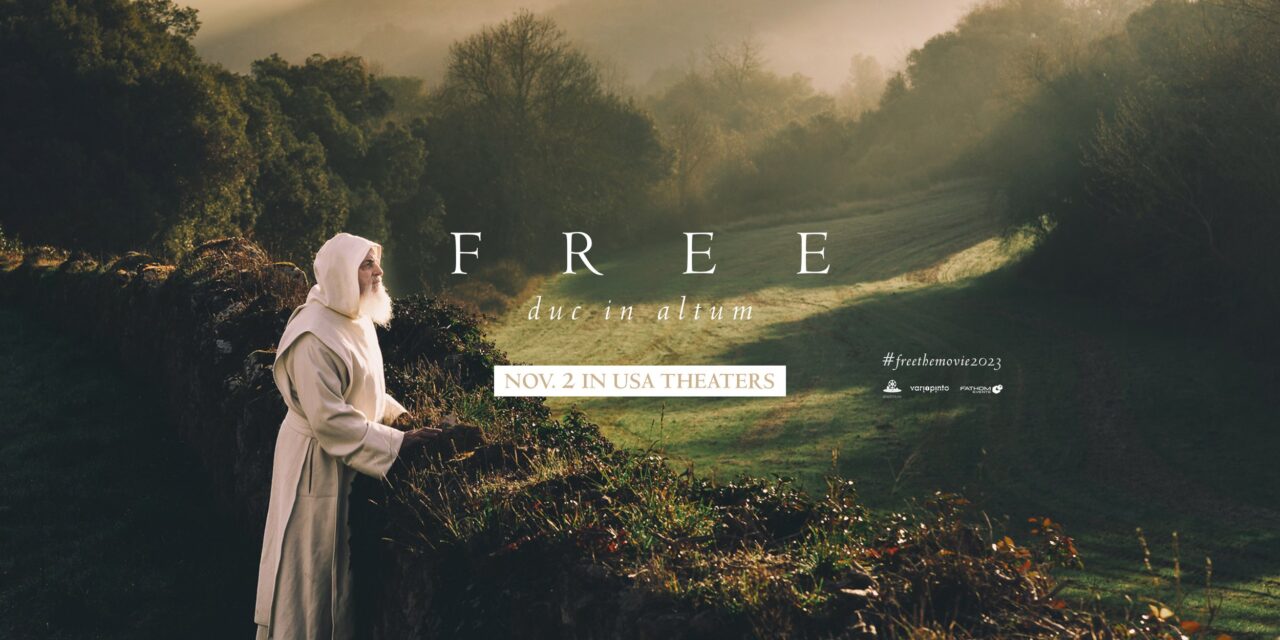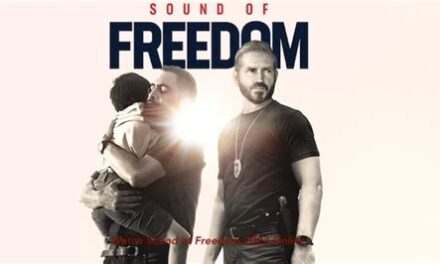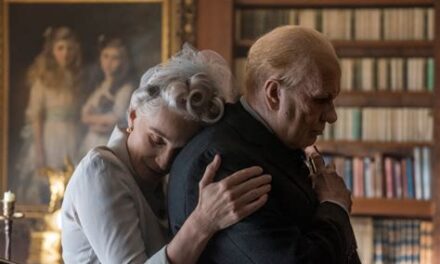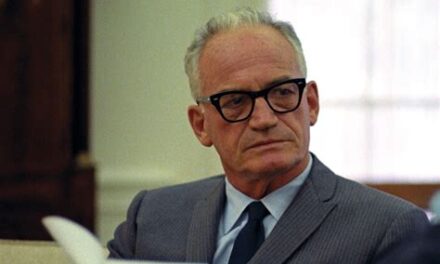I once told a classroom of students that there are two kinds of people in the world: those who want to enter a monastery, and those who don’t. They laughed, and it was, after all, meant to be funny. But it is false? Some people—in fact, very rare souls—possess a cast of heart and mind that leads them to toss the cares and distractions of the world to the wind and dedicate themselves to the contemplation and service of God, Father, Son, and Holy Ghost. This high calling with its focus on ultimate things may be intellectual (see Father Jean LeClerc’s classic The Love of Learning and the Desire for God) or a simple yearning to give to and work charitably for others (as St. Francis did). Whatever its character, the decision to follow the call is sacrificial. Rare souls, indeed.
The documentary Free: duc in altum, which premiered on November 2nd for only one showing in various cities nationwide, paints a moving, eloquent picture of the lives of a few monks, friars, and nuns who have elected to pursue the cloistered or, more accurately, interior life, leaving behind the manifold loves the world offers.
Running about one hour and forty-five minutes, the film unfolds in three sections: hodos (camino, the way), aletheia (verdad, truth), and zoë (vida, life). Christians know that truly pursuing these three things means seeking and serving Christ Himself, the incarnate I AM. As one friar says, in effect speaking for all of those interviewed in Free, the road leading to Christ answers step-by-step the basic questions humans eventually ask themselves: “Why am I here and for what purpose? Does all of this make any sense?” The answers these monastics have found do not produce an easy life with neatly packaged solutions to their problems. But adhering to the order they’ve embraced, with its sometimes special and sometime mundane tasks, they find nourishing solitude, silence, peace, and grace.
Set in Spain, the home to a quarter or more of the world’s monasteries, with Spanish dialogue (English subtitles), the movie jumps from one interview to another in a dozen monasteries. Who are these people? One nun was married with six children before she accepted the veil. A monk spent his earlier life in slavery to heavy metal and satanic worship before, as he tearfully recounts, his mother’s prayers opened a new way to peace and meaning. A friar speaks of his twenty-eight-year-old daughter, the product of a failed marriage. Another nun recounts with a bright smile how her doctor told her that she has cancer and perhaps ten months to live. Her response was a joyful “ten months!” The doctor can only say, “You Basques,” but her ecstasy comes less from her ethnic origins than from the certainty that for her death is a portal to eternity with Christ, everything she has longed for. A third nun, still young and pretty, remembers how she once wanted what so many girls want, marriage and children; now she’s found the true husband in Christ.
After a monk recalls a man who visited his monastery and found the “energy” within the its walls he’d sought in the far east, a nun, commenting evidently on the same event, observes that the energy he found was Christ, “energy par excellence.” And it’s fair to say that the reality of the living Son who sits at the right hand of the Father informs every interview.
At the same time, these monastics have no illusions about the lives they lead, which include menial work in the kitchen, garden, and apiary; monasteries must bring in money to survive, and the sale of honey, produce, and, presumably, wine provides at least part of the necessary funds. Beyond the financial demands are personal concerns: the occasional feelings of doubt or loneliness, especially when God seems distant or silent. But another silence, the stillness of peace, that comes from letting the temptations of the world go and trusting God, always comes to dispel the worries that assail them.
Free punctuates the interviews with glimpses of everyday monastic life: a monk striding down a sunlit hall, another praying the rosary as he walks along the cloister, nuns in the scullery, nuns playing basketball, Bible-reading in the scriptorium, and, of course, assembled choirs singing. Other scenes emphasize the power, terror, and beauty of nature: the sea’s explosive waves, the stillness of the forest, and the rippling of a stream, all testimonies to the God who created them.
The young director Santos Blanco assembled a gifted team to create a stunning film: cinematographer Carlos de la Rosa, composer Oscar M. Leanizbarrutia, and editor Paulo Garcia Seco. The result is surely an act of love but also of alms-giving. During Covid, the monasteries were denied many of their usual sources of income, and Blanco hoped to supply that need by making the movie.
One showing on one day is a strange way of promoting a film. When my wife and I watched it, we had the theater to ourselves. Doubtless in other, bigger cities, it was better attended. Moreover, I had a frustrating time finding the website (freethemovie.org); YouTube offered little more than the Fathom Events and Bosco Films trailers, which were identical. Notwithstanding those complaints, Free remains a true gem, a thoughtful and respectful probing of the monastic life. It’s hard to imagine people seeing it and leaving the theater without hoping to incorporate its chief lesson in their lives, which surely is that in Christ there is hope, purpose, and peace.














